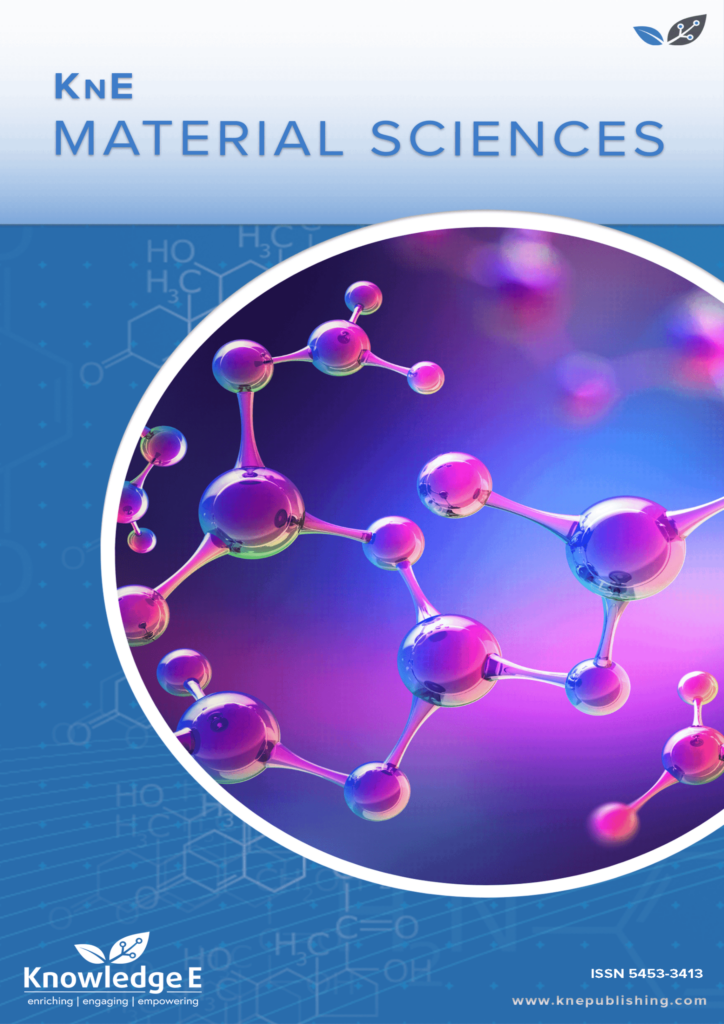
KnE Material Sciences
ISSN: 2519-1438
The latest conference proceedings on physical materials, energy materials, electrical materials.
Simulation of Vacancy and Atom Migration in B2 Type Structures
Published date:May 06 2018
Journal Title: KnE Material Sciences
Issue title: 15th International School-Conference "New Materials – Materials of Innovative Energy" (MIE)
Pages:309–317
Authors:
Abstract:
The diffusion mechanism in ordered systems should ensure the conservation of longrange order in the arrangement of atoms. However, despite the large number of theoretical and experimental papers devoted to this issue, the diffusion mechanisms in such systems havenot been established to date. Earlier in our works a variant of the mechanism is suggested that ensures the fulfillment of the above-mentioned condition, and the obtained barrier values for which are of lower values than other known mechanisms. In addition, it is noted in these papers that for a wide temperature range vacancies move in a tied state jumping on the different sublattices. Therefore, the bi-vacancy diffusion mechanism with jump atoms to vacancies from the second coordination sphere is considered. A model based on the Kinetic Monte Carlo and a set of programs for studying the migration of bivacancies and atoms in B2-type structures have been developed.
References:
[1] H. Mehrer. Diffusion in solids. – Springer. –2007, 651 p.
[2] H.E. Schaefer, K. Frenner, R. Wurschum, in: Y. Mishin, G. Vogl, N. Cowern, R. Catlow, D. Frakas (Eds.), Diffusion Mechanisms in Crystalline Materials, Materials Research Society Proceedings, vol. 527, Pittsburg, PA, 1998, pp.123 – 133.
[3] M.G. Ganchenkova, A.V. Nazarov. Modeling of diffusion in ordered structures of B2- type, in Diffusion Mechanism in Crystalline Materials // C.R.A.Catlow et al (eds), MRS Symp. Proc. Ser. – 1998. – Vol. 527. – pp.221 – 226.
[4] M.G. Ganchenkova, A.V. Nazarov. Simulation of the defect complex migration in the ordered structures // Computational Materials Science. – 2000. – Vol. 17. – №2 – 4. – p.319.
[5] M.G.Ganchenkova, A.V.Nazarov. Simulation of the defect complex migration and the comparison of the different diffusion mechanisms in the ordered structures// Solid State Phenomena.– 2000. – Vol.72. –pp.215 – 226.
[6] L.V. Selezneva, A.V. Nazarov. Simulation of interstitial atom diffusion in FCC metals with point defects// Defect and Diffusion Forum. –2005. – Vol.237 – 240.–pp.1275 – 1280.
[7] J.L. Bocquet, C. Shmidt. Metal Physics and Advanced Technologies. – 1998. – Vol.21. –pp.20 – 29.
[8] M. Eggersmann, H. Mehrer. Metal Physics and Advanced Technologies. – 1998. – Vol.21. – pp.71 – 75.
[9] S.V. Divinski, St. Frank,Chr. Herzig, U. Södervall. The Ni self-diffusion in NiAl: An experimental investigation of the temperature and composition depenudencies and atomistic simulation of diffusion mechanisms // SolidState Phenomena.-2000.- Vol.72.- pp.203-207.
[10] St. Frank, S.V. Divinski, U. Sodervall, and Chr. Herzig:ActaMater. – 2001. – Vol. 49. – pp. 1399–1411.
[11] Y. Minamino, Y. Koizumi, and Y. Inui//DefectDiffus. Forum. – 2001. – Vol. 194–199. – pp. 517–22.
[12] Y. Mishin, A.Y. Lozovoi, A. Alavi // Physical review. –2003.– Vol. 67.– P.1–9.
[13] G.E. Murch, Am. J. Phys. 47 (1979) 958.
[14] G.E. Murch, in: G.E. Murch, A.S. Nowick (Eds.), Diffusion in Crystalline Solids, Academic Press,1984, Chapter 7.